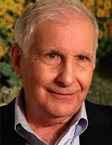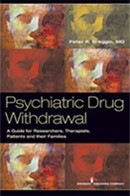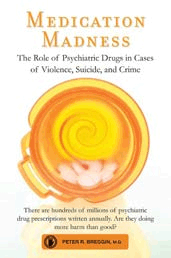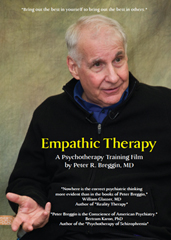Psychiatry Has No Answer to Gun Massacres
By Peter R. Breggin, MD
December 22, 2012
The Newtown tragedy has sent us searching for answers to mass killings. There are many important questions to be addressed, such as “Is tighter gun control feasible and consistent with the Second Amendment?”, “Can we prevent so much teen exposure to violent games and movies?”, “Would it help to put armed guards in schools or to arm teachers and principals?”, and “How much mass murder is driven by psychiatric drug exposure?” These are critical issues.
Recently, another issue is being pushed by both the political left and the political right. In the last few days, talking heads on TV and even some of my friends have been arguing that we need stronger commitment laws and other psychiatric interventions to protect people from maniacal shooters. In additional to gun control, President Obama is talking about increased mental health services.
As a psychiatrist, I know that increasing the power of psychiatry in our society is not the way to go.
To begin with, we need to distinguish between good mental health services and the kind of services that will result from government promotion of mental health services. In the mid-1960s I was an officer in the U.S. Public Health Service, and for a year I was a fulltime consultant at NIMH helping to build and staff community mental health centers around the country. They were supposed to address a broad range of needs and services, but utterly failed to do so. The remnants of them are nothing more than drug dispensaries.
We know exactly what happens when the government pushes mental health services, because we can examine their results. The VA, state mental hospitals, and county clinics offer little else than drugs. Or consider the scandals involved in government-run foster care where children are routinely subdued with drug cocktails..
It is becoming increasingly clear that Adam Lanza, the Newtown shooter, was very emotionally disturbed and socially incapacitated. But what does psychiatry have to offer in protecting society from individuals who have serious psychological or psychiatric problems, and who may sometimes become violent? Does it offer treatments that will help these individuals live more normal lives? Can it screen for violence and protect us from disturbed and destructive people?
First of all, making involuntary treatment even easier won’t reduce violence. Every state in America already has laws to temporarily incarcerate individuals in mental hospitals if an official suspects them of being a danger to other people. Short-term, depending on the state, this temporary certification process can be carried out by a wide range of health professionals and law enforcement officials. It does not require a judge or a hearing in order to accomplish this–just one or two officials to sign the papers. It is especially easy for a parent to initiate this process, because health and law enforcement officials are especially responsive to parental concerns about violence.
Second, after an individual is locked up in a mental hospital on a temporary certification, it is always possible to detain that individual long enough to obtain a court hearing for more lengthy involuntary commitment. It is well known that these hearings compromise individual rights and are almost always won by the committing agency and doctors.
Third, in recent years a growing number of state, now a total of 44, have passed draconian legislation whereby individuals can be committed and forced to accept psychiatric drugs on an “outpatient” basis. That is, they can be forcibly drugged into a stupor while remaining otherwise free. This has become a widespread affront to civil liberties while causing considerable misery and physical harm through medication toxicity.
Fourth, so many people harbor feelings of violence, and so few perpetrate them, that it is impossible to screen society for violent individuals without untold numbers of “false positives.” In a general psychiatric practice such as my own, a number of patients will be struggling to control their violent feelings and usually a few will have acted aggressively or violently in the past. Within society as a whole, there will be thousands of “suspicious-looking” people locked up and drugged for every genuine threat. The recent demise of the nation’s largest screening program for mental disorder in the schools took place in part because it was criticized for being both ineffective and a threat to individual rights.
Fifth, meanwhile, psychiatry and individual psychiatrists have no way of determining who poses a real risk of violence other than the common sense indicators, such as the person is making threats or has already committed violence. Nowhere in the scientific literature is there a study that confirms that psychiatrists can determine who will, or will not, perpetrate violence. Scientific risk assessment approaches cannot be relied upon to make decisions about treatment or incarceration.
Sixth, “mentally ill” people, that is, people who get diagnosed psychiatrically, are not more dangerous than the general population, including neighbors in their communities. However, individuals suffering from substance abuse do have increased rates of violence, but largely toward family members rather than the public.
Seventh, when psychiatry becomes involved, drugs are dispensed, and psychiatric drugs can cause or worsen violence. A recent study of reports to the FDA of drug-induced violence has demonstrated that antidepressants have an 840% increased rate of violence.
In particular, there is no doubt that the Columbine High School shooter Eric Harris had an effective level the antidepressant Luvox (fluvoxamine) in his blood at the time of the massacre. For the first time, I’m making public the drug company report to the FDA confirming that Harris had a “therapeutic” level of the drug in his body at the time of the murders. This is the official report to the FDA on March 17, 1999, from Luvox (fluvoxamine) manufacturer Solvay Pharmaceuticals confirming “the presence of a Luvox blood level at autopsy.” I was an expert in cases surrounding the Columbine shootings and can also confirm that Eric Harris was taking the drug for a year, had a dose increase to 200 mg per day two and one-half months before the assault on the high school, and was showing signs of toxicity in the form of a drug-induced tremor five weeks before the event. Meanwhile, his writings indicate he was becoming more and more violent while taking Luvox.
The most devastating recent shooters were all involved with psychiatric treatment and evaluation, and it did not prevent their violence. In some cases, it undoubtedly increased it. Eric Harris, as noted, was in treatment for at least a full year leading up to assault on Columbine High School. Cho, the Virginia Tech shooter, came to the attention of police and then mental health authorities as a result of harassing another student and threatening suicide in 2005. A voluntary mental examination found him “mentally ill and in need of hospitalization” and Cho was hospitalized and found to be a danger to himself and others. In December 2005, he was court-ordered to have follow-up treatment but this was never enforced. There is no record of any further psychiatric treatment.
James Holmes, the Aurora, Colorado theater shooter, in the months leading up to his violent assault, was in psychiatric treatment with psychiatrist Lynne Fenton, medical director of student health services at the Anschutz campus of the University of Colorado, where Holmes was a graduate student in neuroscience. Fenton was considered an expert on campus violence and had written the protocol for her campus threat assessment team. She was sufficiently worried about his propensity for violence to report him to the campus police and the campus threat assessment team in early June, a few weeks before the theater assault. When the assessment team suggested putting Holmes on a 72 hour involuntary hold, psychiatrist Fenton rejected the idea. When Holmes quit school, the school washed its hands of all responsibility for him.
Adam Lanza’s psychiatric history remains undisclosed but there are indications that he was at some time psychiatrically diagnosed and taking psychiatric medications. The Washington Post quoted a family friend as stating he was “on medication.” Given his affluent family, he was almost certainly taken to psychiatrists.
Many people who could be helped by psychological or socially-oriented counseling or therapy avoid seeking psychiatric treatment for fear of being locked up and/or drugged against their will. There is some indication that the Newtown shooter was triggered in part by fear that his mother was going to have him treated involuntarily. My own clinical experience indicates that most violence perpetrated by “mental patients” takes place in reaction to and in resistance to having treatment forced upon them.
Overall, psychiatry has a history, both past and current, of trampling on the rights of untold millions of innocent, nonviolent individuals in the name of protecting society from dangerous people. The two hundred year history of state mental hospitals is one of the most oppressive in the western world. The current widespread psychiatric diagnosing and drugging of America’s children is another tragic example. It’s dangerous folly to seek solutions to violence from within psychiatry.
So, we need to get down to business of figuring out how to reduce school shootings and mass violence. We need to come together with determination to find solutions. Increasing psychiatric power is a distracting mirage; it is not one of the solutions that will work.
Families do need improved services to help with difficult, distressed, or potentially violent children, and a wide variety of empathic, caring approaches are available to provide this help. Schools also need more services to reach out to children and youth who are withdrawn and isolated, and on very rare occasion potentially violent; and again there are numerous effective ways of offering this help. I describe a number of these child and family-oriented interventions in my book that focuses on the Columbine High School massacre and other school shootings: Reclaiming Our Children: A Healing Plan for a Nation in Crisis.
Truly beneficial therapies and educational interventions do not rely on psychiatric diagnoses or drugs. Instead, they are based on what our Center for the Study of Empathic Therapy calls its “Guidelines for Empathic Therapy.” But federal, state and county governments will push for “modern” biopsychiatric treatments which will, beyond any doubt, do more harm than good.
Peter R. Breggin, MD is a psychiatrist in private practice in Ithaca, New York, and the author of more than forty scientific articles and twenty books, two of which are very relevant to current events in regard to medication-induced violence. In Medication Madness (2008) Dr. Breggin examines fifty cases of medication-induced violence, mayhem and suicide. His latest book is Psychiatric Drug Withdrawal: A Guidebook for Prescribers, Therapists, Patients and Their Families. It presents reasons to withdraw from psychiatric drugs and describe a safe and effective patient-centered approach for prescribers, therapists, patients and their families to use. Dr. Breggin’s website is www.breggin.com.





